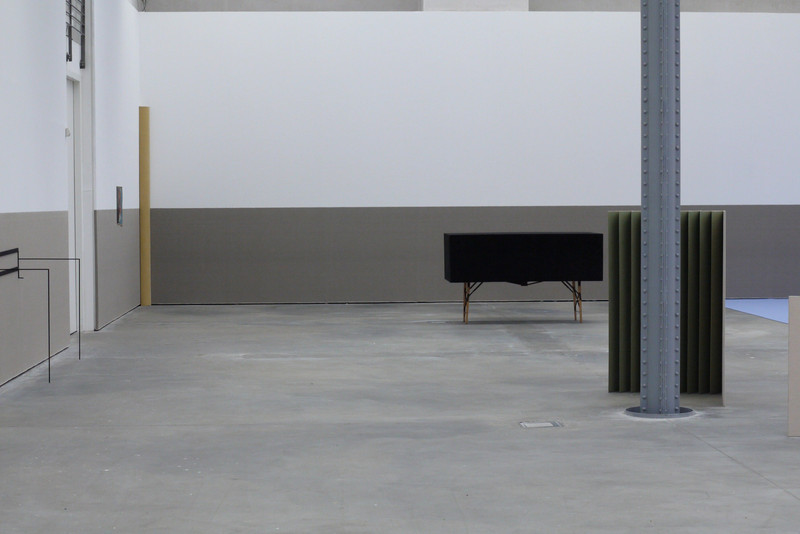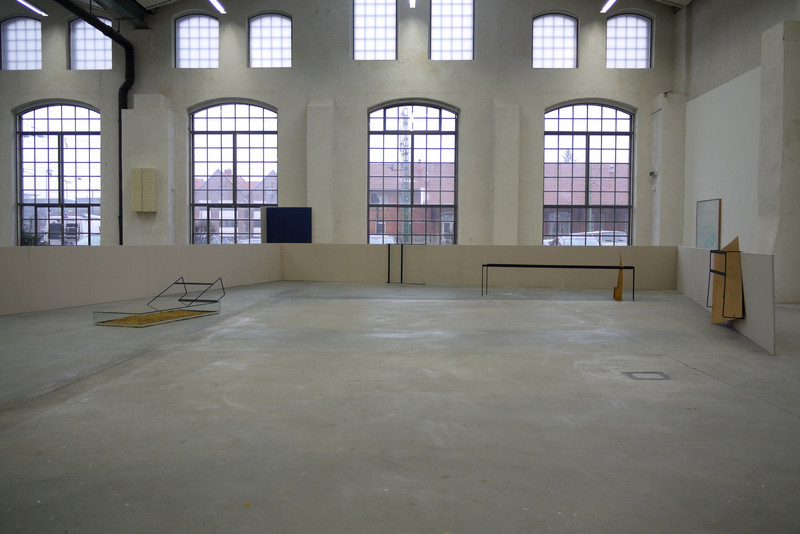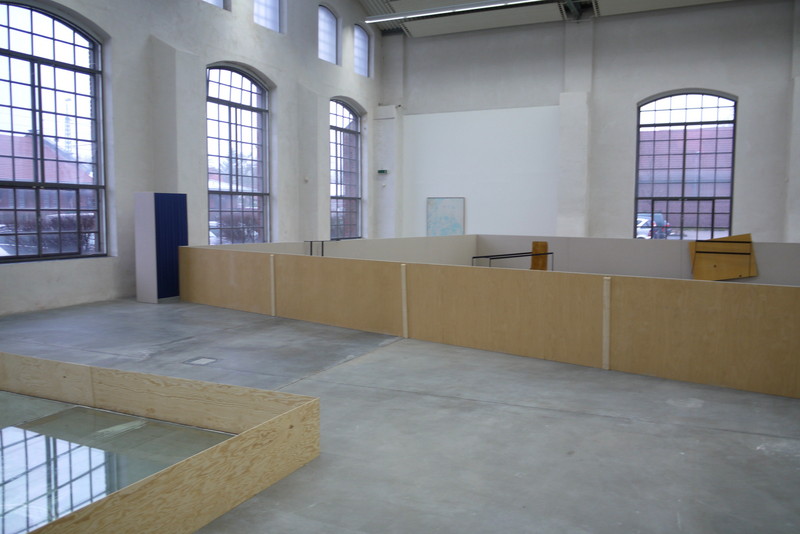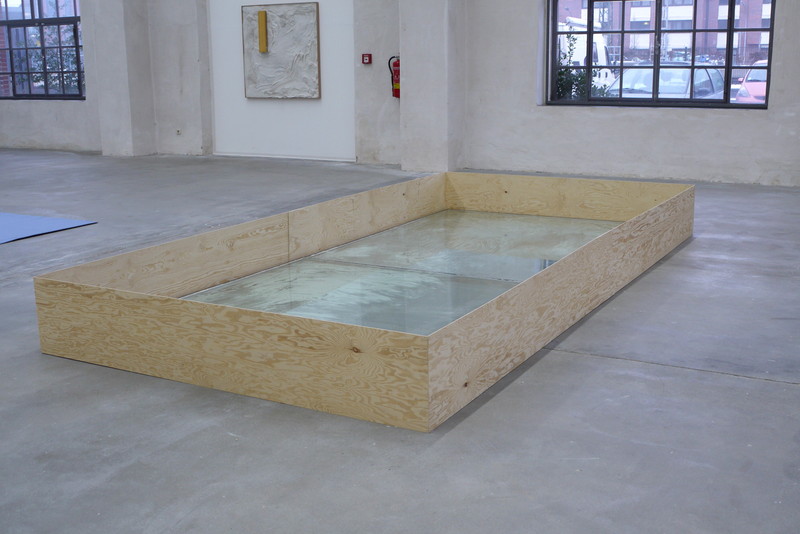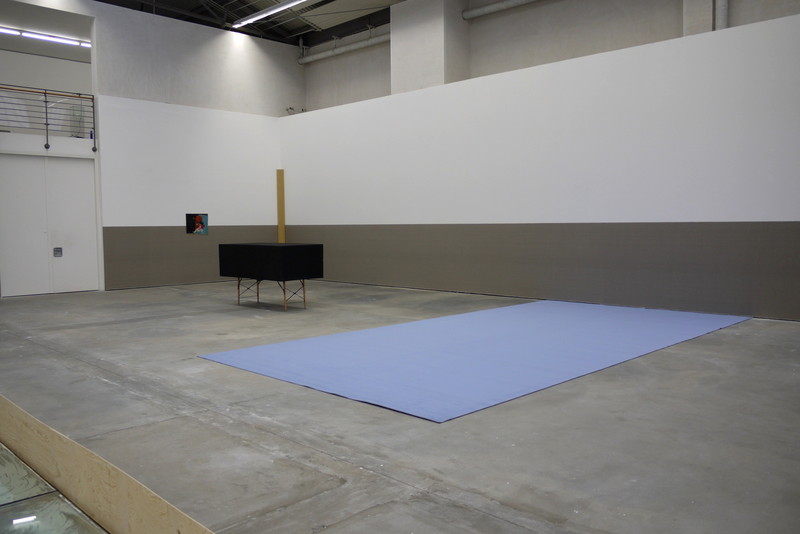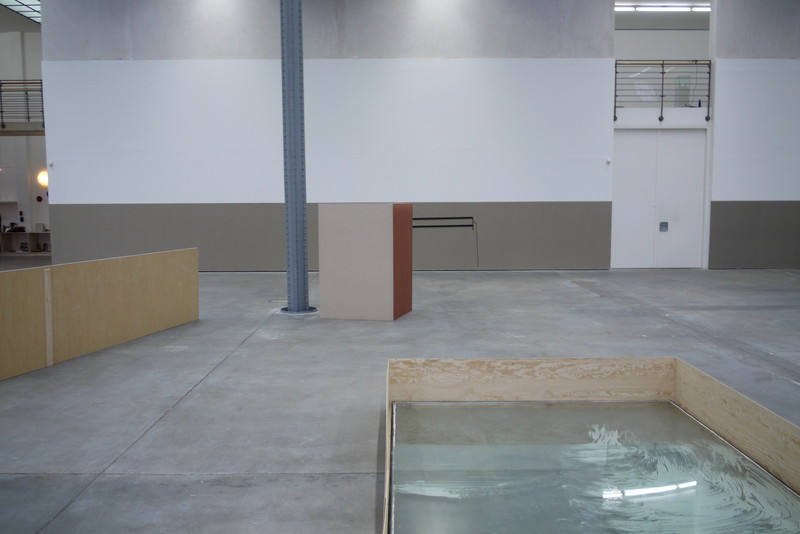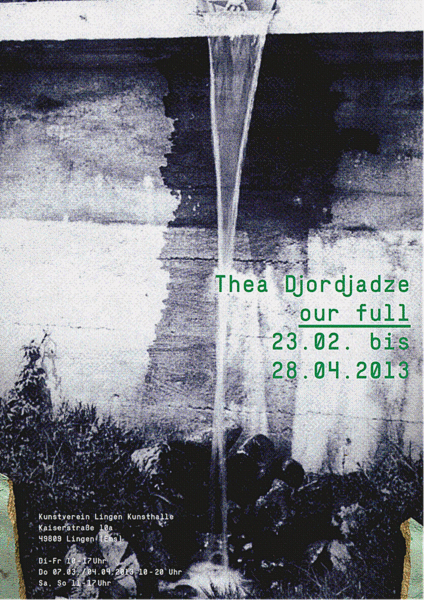Thea Djordjadze
23 Feb - 28 Apr 2013
THEA DJORDJADZE
our full
23 February - 28 April 2013
Thea Djordjadze creates in a site-specific way. Although many of the objects are made in her studio, her works acquire their final form within their exhibition space; giving a work its final configuration and adapting it to the specific space are a crucial part of her approach. She often works to the very last moment, thereby keeping the relationship between the object and the space open as long as possible. The result is a kind of mutual transformation in which the art adapts to the space and the space to the art—an organism composed of objects and the impressions those objects leave after themselves. A movement which leads on to the next one.
Djordjadze creates sculptures, organisms and indeterminable landscapes—traces and craters of modernism, impressions of something out of keeping with the times. Her sculptures reflect both antique landscapes from nomad cultures and the cornerstones of twentieth-century avant-garde architecture and art. For her sculptures and installations, she uses clay and plaster, which she models and sometimes paints. She combines the results with materials such as canvas, metal, foam rubber, textiles, rugs, pigments, papier-mâché and wood. In her sculptures and installations these soft, hand-made objects are constantly encountering sharp edges of metal and wood. The installation also includes paintings, recently rediscovered, which she created nineteen years ago.
Djordjadze uses “supporting elements” in her sculptures; they provide support and act as a base for something else, but mostly they are of equal sculptural importance as the object for which they are intended. Supporting elements become sculptures and sculptures become supporting elements. They prop up each other, merge and grow together. But the supporting elements also create an instability: if the support is removed, everything collapses. Her works can therefore be regarded as fragile with a built-in frailty, almost as if the intention is for them to fall apart in order to change over time and become something new.
The exhibition first took place at Malmö Konsthall and will continue to Mudam Luxembourg. There, the exhibitions will resemble each other and consist of the same works with some added and others removed. Despite this, each exhibition will be unique and different, and will reflect Djordjadze’s work methods and the way she occupies a space. She will, of course, work in a site-specific way at each exhibition venue, and will adapt her works to the existing architecture to give them a new form and aura.
Thea Djordjadze (b, 1971; Tbilisi, Georgia) lives and works in Berlin. She studied at the Academy of Arts in Tbilisi from 1988 to 1993. The academy closed in 1993 due to the Georgian civil war. Djordjadze moved to Amsterdam to study at the Gerrit Rietveld Academy. After a year she moved to Düsseldorf, where she studied at the Staatliche Kunstakademie until 2001. Selected solo exhibitions include the Common Guild, Glasgow (2011), westlondonprojects, London (2009-2010), Kunsthalle Basel (2009), Kunstverein Nurnberg (2008). Selected group exhibitions include dOCUMENTA (13), Kassel (2012); Carré d’Art, Musée d’Art Contemporain, Nîmes (2011); Sculpture Centre, New York (2011); Hayward Gallery, London (2010); Centre Georges Pompidou, Paris (2010); Barbican, London (2008); the BB5 – 5th Berlin Biennial for Contemporary Art (2008) and the Venice Biennale (2003).
our full
23 February - 28 April 2013
Thea Djordjadze creates in a site-specific way. Although many of the objects are made in her studio, her works acquire their final form within their exhibition space; giving a work its final configuration and adapting it to the specific space are a crucial part of her approach. She often works to the very last moment, thereby keeping the relationship between the object and the space open as long as possible. The result is a kind of mutual transformation in which the art adapts to the space and the space to the art—an organism composed of objects and the impressions those objects leave after themselves. A movement which leads on to the next one.
Djordjadze creates sculptures, organisms and indeterminable landscapes—traces and craters of modernism, impressions of something out of keeping with the times. Her sculptures reflect both antique landscapes from nomad cultures and the cornerstones of twentieth-century avant-garde architecture and art. For her sculptures and installations, she uses clay and plaster, which she models and sometimes paints. She combines the results with materials such as canvas, metal, foam rubber, textiles, rugs, pigments, papier-mâché and wood. In her sculptures and installations these soft, hand-made objects are constantly encountering sharp edges of metal and wood. The installation also includes paintings, recently rediscovered, which she created nineteen years ago.
Djordjadze uses “supporting elements” in her sculptures; they provide support and act as a base for something else, but mostly they are of equal sculptural importance as the object for which they are intended. Supporting elements become sculptures and sculptures become supporting elements. They prop up each other, merge and grow together. But the supporting elements also create an instability: if the support is removed, everything collapses. Her works can therefore be regarded as fragile with a built-in frailty, almost as if the intention is for them to fall apart in order to change over time and become something new.
The exhibition first took place at Malmö Konsthall and will continue to Mudam Luxembourg. There, the exhibitions will resemble each other and consist of the same works with some added and others removed. Despite this, each exhibition will be unique and different, and will reflect Djordjadze’s work methods and the way she occupies a space. She will, of course, work in a site-specific way at each exhibition venue, and will adapt her works to the existing architecture to give them a new form and aura.
Thea Djordjadze (b, 1971; Tbilisi, Georgia) lives and works in Berlin. She studied at the Academy of Arts in Tbilisi from 1988 to 1993. The academy closed in 1993 due to the Georgian civil war. Djordjadze moved to Amsterdam to study at the Gerrit Rietveld Academy. After a year she moved to Düsseldorf, where she studied at the Staatliche Kunstakademie until 2001. Selected solo exhibitions include the Common Guild, Glasgow (2011), westlondonprojects, London (2009-2010), Kunsthalle Basel (2009), Kunstverein Nurnberg (2008). Selected group exhibitions include dOCUMENTA (13), Kassel (2012); Carré d’Art, Musée d’Art Contemporain, Nîmes (2011); Sculpture Centre, New York (2011); Hayward Gallery, London (2010); Centre Georges Pompidou, Paris (2010); Barbican, London (2008); the BB5 – 5th Berlin Biennial for Contemporary Art (2008) and the Venice Biennale (2003).

